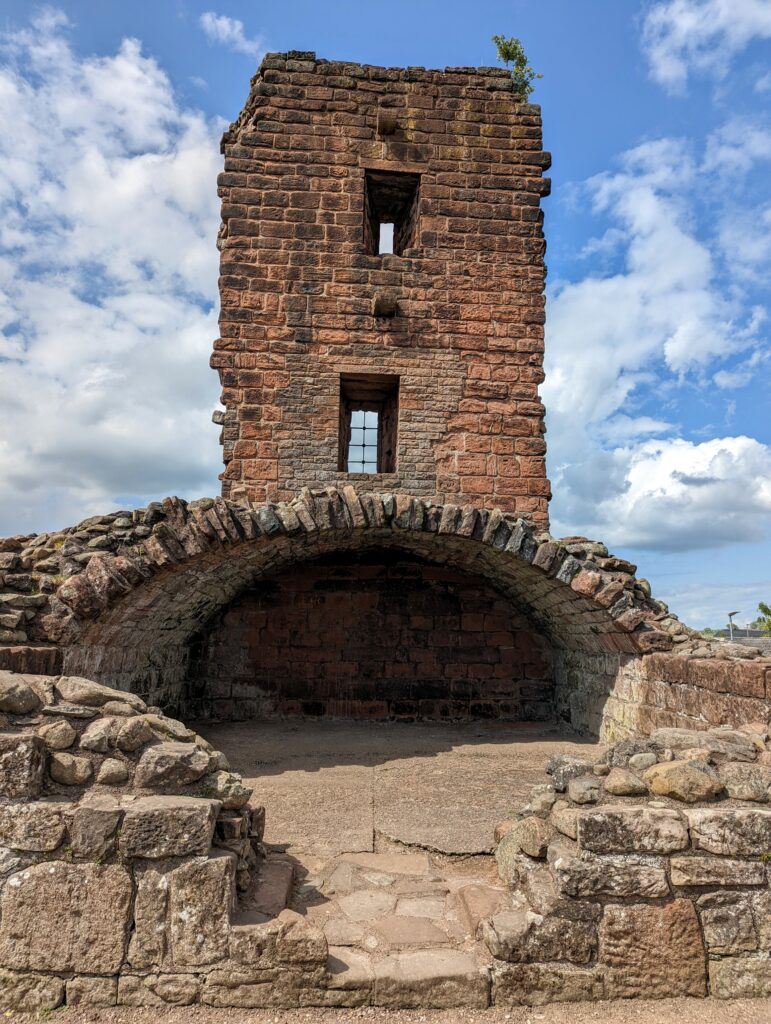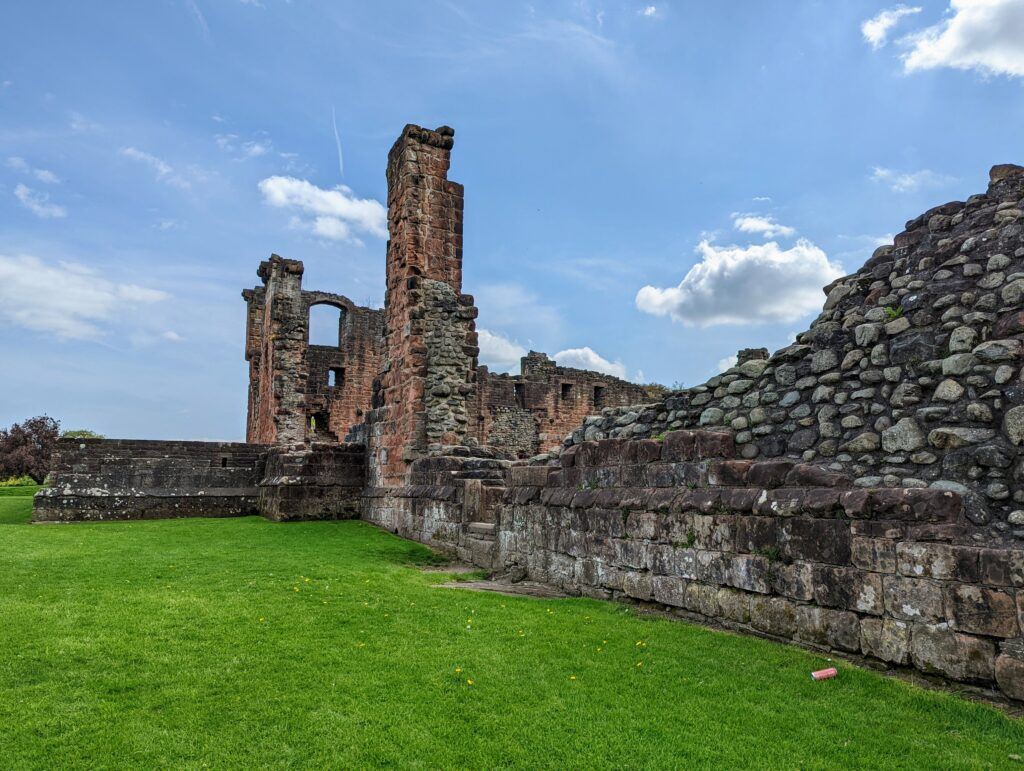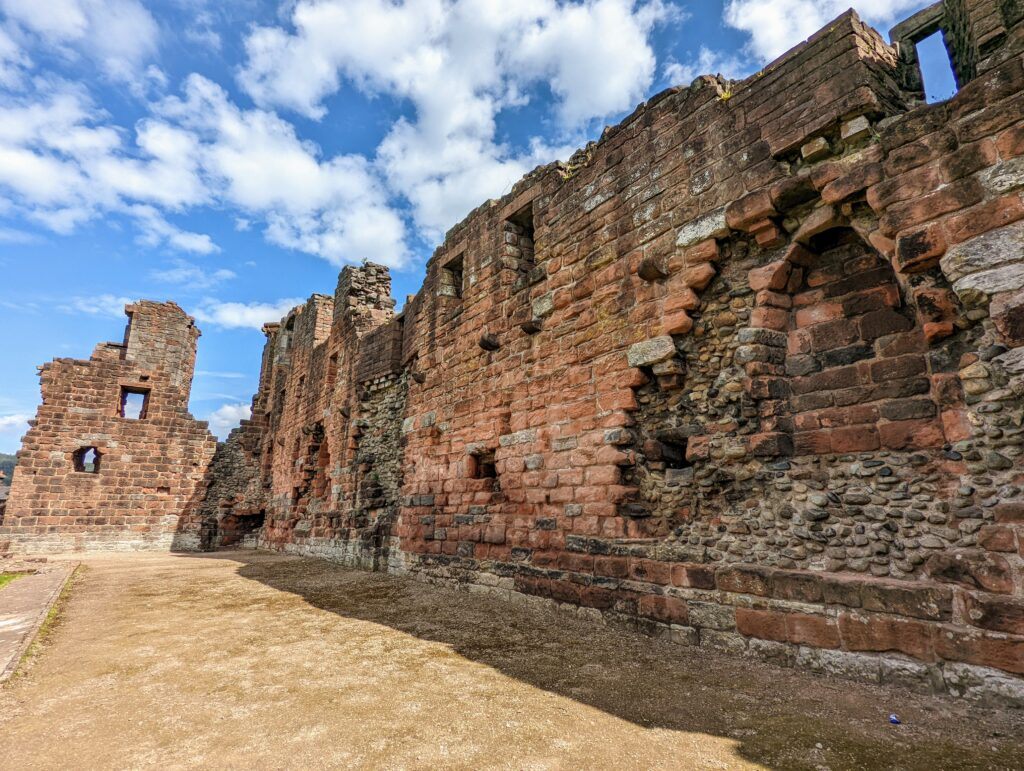The striking sandstone remains of Penrith Castle are situated within the busy Cumbrian town of Penrith besides busy roads with a train station opposite although this was not the case when the fortification was originally constructed. There is a fair amount of uncertainty over Penrith Castle’s origins which perhaps adds to its intrigue.
| Built | 14th Century |
| Building Material | Sandstone |
| Condition | Ruins |
| Ownership | English Heritage |
| Access | Public – Free |
Beginnings
The exact origins of Penrith castle are debatable but the popular consensus is that the castle’s story began in the 1380’s when a rectangular pele tower with walls up to 2 metres thick was built upon a hill, although not at its summit but about 170 metres further down upon the site of a Roman Fort.
In 1399, William Strickland, Bishop of Carlisle was granted permission to crenellate, or fortify, by King Richard II, however it is now thought that he likely built the nearby Hutton Hall rather than Penrith Castle. Ralph Neville, warden of the West March is the more likely candidate to have built Penrith Castle in the late 14th century as he was responsible for the defence of the area against the Scots.
Penrith Castle passed down to Ralph Neville’s son, Richard, 5th Earl of Salisbury, who saw it as an important strategic fortification and made it his headquarters and built the “Red Tower”.
The castle eventually passed down in the late 15th century to Richard, Earl of Warwick or more commonly known as “Richard, the Kingmaker”. Richard was a key player in the “War of the Roses” and helped King Edward IV seize power. Richard later switched sides and was killed at the battle of Barnet in 1471.


King in the Making’s Residence
Following Richard Neville’s death the castle was granted to Richard, Duke of Gloucester, 1452-1485 (the future King Richard III). Richard used Penrith castle as his base during his time as Sheriff of Cumberland and recognised Penrith castle’s strong strategic position in securing the county against attacks from the Scots. During Richard’s occupation at Pentrith castle he made some alterations and improvements to accommodate someone of his status, a new gatehouse and tower were added, a raised external wall and larger windows for comfort.
In the 15th century a dry moat was added which surrounds the castle grounds which measures up to 15 metres wide and 6 metres deep.


Forgotten
Once Richard was crowned king of England he no longer resided at Penrith castle, the castle remained property of the crown but was left to slowly decay. As evidenced from a survey in the mid 1580 that described the castle as ruinous.
Penrith castle did get one last notable military mention when it was brought back to life during the English Civil War (1642-1651). The castle was used as the headquarters for the Parliamentarian general John Lambert with 3000 troops garrisoned at the castle. The castle’s new lease of life was short lived though and following the war it was further dismantled in the 17th century.
In the late 19th century the castle was sold to the Lancaster and Carlisle Railway Company and it narrowly avoided being dismantled altogether. The Railway Company built Penrith Railway Station which is situated opposite the castle.
The castle grounds were cleared of encroaching farm buildings and turned into a park area in 1920. The castle is now a designated Grade I listed building maintained by the English Heritage and currently free to explore.
Ghost Army – Haunted Penrith Castle
Back in 1735 a farmer was stunned to see an army marching over the hill beside Penrith Castle on Midsummer’s Eve. The castle had been unoccupied for almost 100 years and there were no armies anywhere near the area. Locals considered this tale to be nonsense but a few years later a number of witnesses were shocked to also witness the same phenomenon. Over the following years a number of further sightings of the ghost army were noted.

